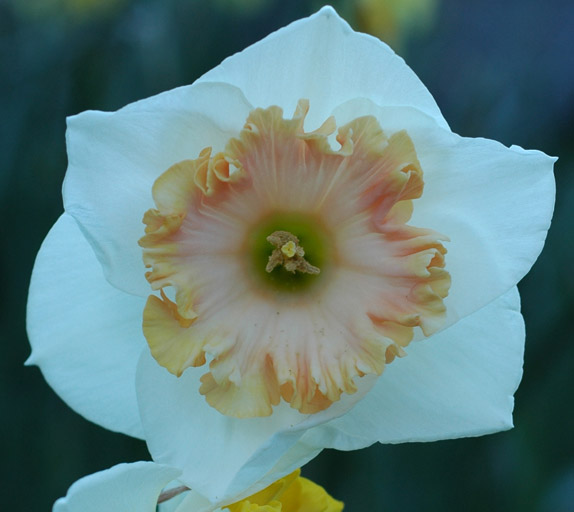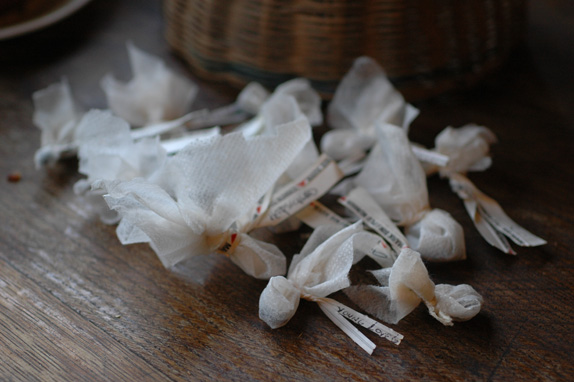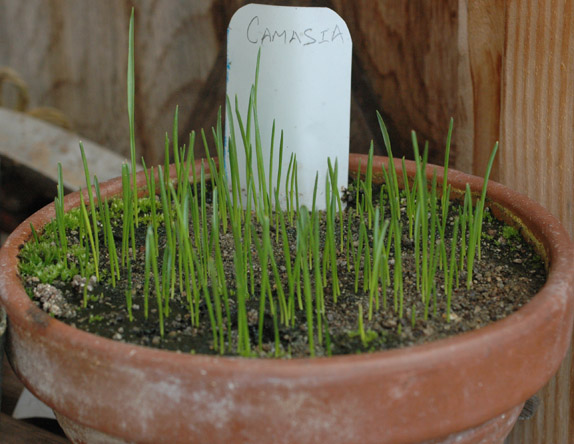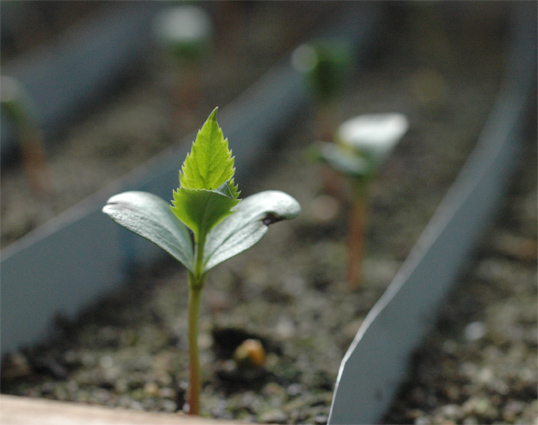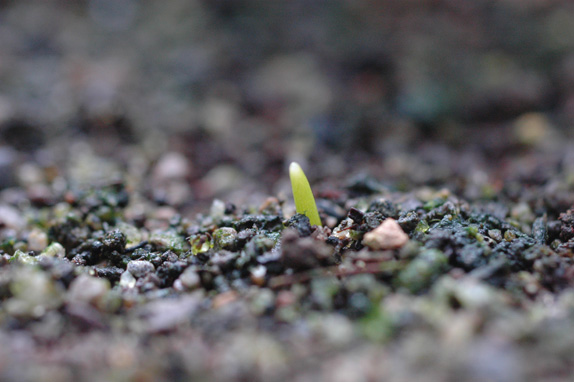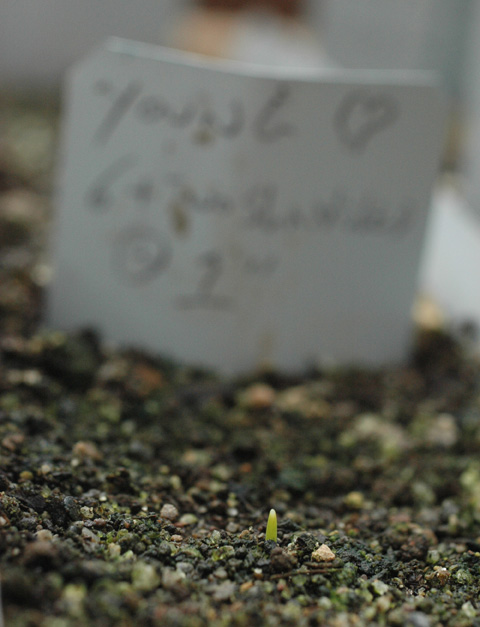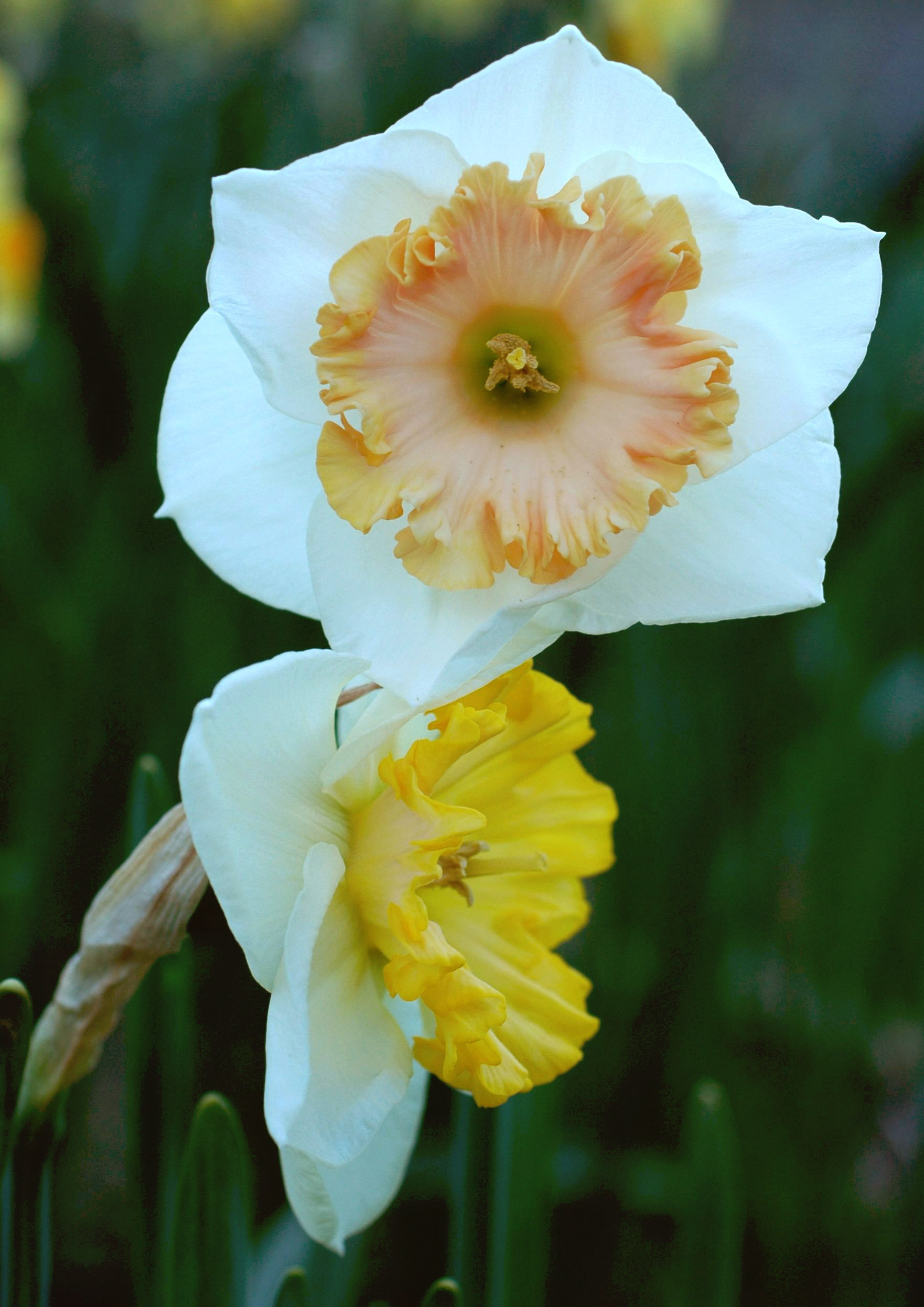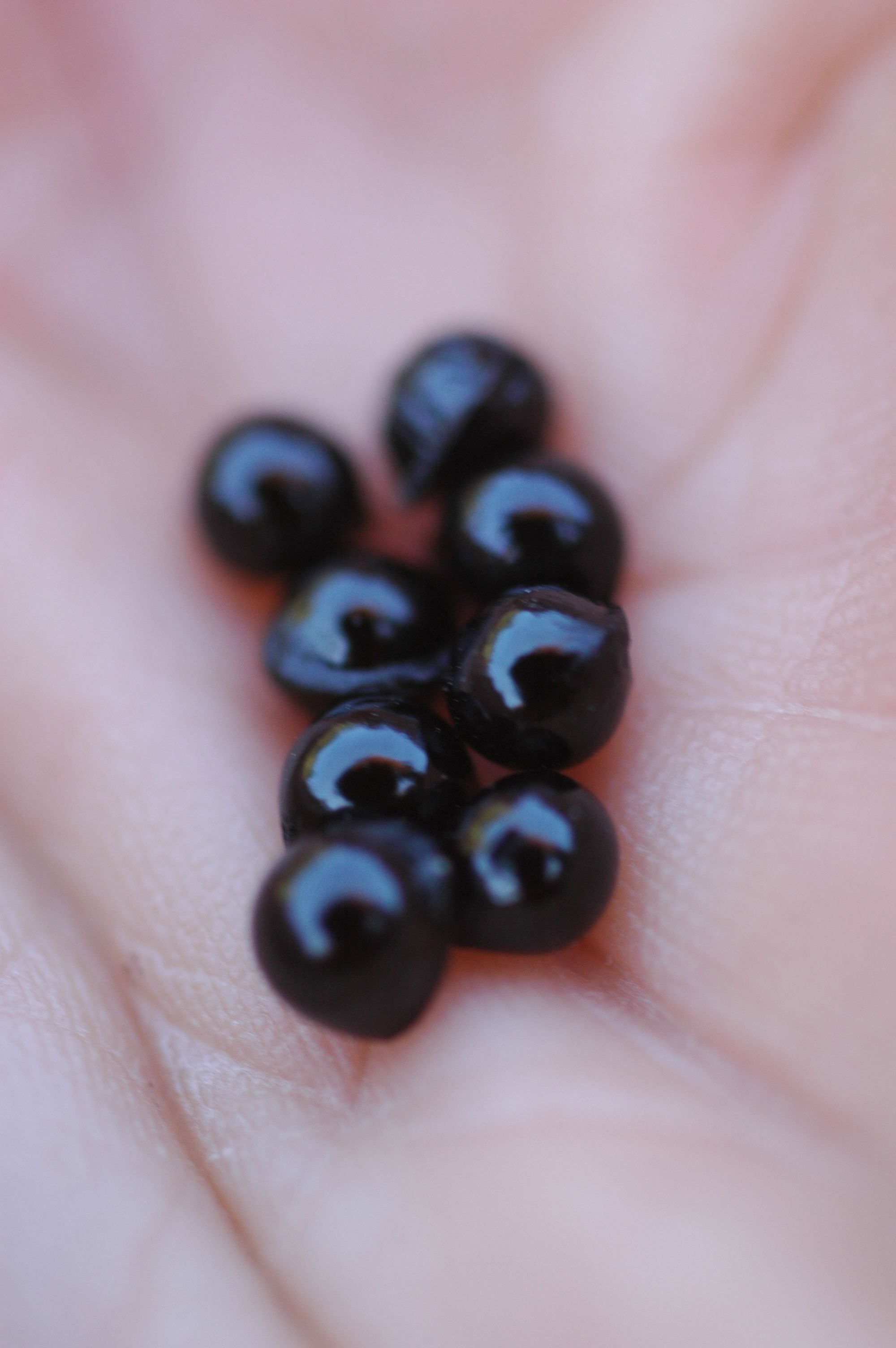Red fall leaves on one of my seedling apples
I’ve been interested in how much my blood apple seedlings show red pigmentation in the bark, flowers, wood and leaves. My impression is that the apples with the most red flesh also tend to have more of this coloration in other parts of the tree as well. Bud 9 rootstock is a good example, with very red flesh and bright orange to red coloration in the fall leaves. It also has dark red bark and even red in the wood. Most of my seedlings show only minimal red coloration in the spring and fall and very few have really reddish bark, with none close to the deep purple/red of bud 9. This video shows one seedling that has stronger red traits than the rest. I suppose this trait may be affected somewhat by it’s age and where it’s growing, but I’m pretty sure this seedling is exceptional.
Maypole has strong expression of red genes in general as you can see in this spring photo. The apples are also strongly red fleshed, a bit crabby, but still very edible, with some of the delicious red flavor found in red fruits like berries. I've been very impressed by this apple the last couple years and made numerous crosses with it this past spring. I'd like to plant enough of them to make juice. The tree is very narrow and short so they could probably be planted only 3 feet apart or so. I haven't juiced any, because I haven't had enough fruit, but I'm sure it will be very good.
I suppose one could select seedlings by coloration in the new leaves, or in the fall leaves, or in the bark even. I know that Nigel Deacon does that in selecting his seedlings. I’ve decided not to for the time being. I may later when I have gathered information from the fruit of seedlings I have in the ground right now. For the time being, I want to see what happens with all of them. Not all of the best blood apples that I grow have strong pigmentation in places other than the flesh, so by culling most of the seedlings and keeping only the reddest leaved ones, I could end up tossing out something really good and I’d never know. Another reason to keep everything for now is that I have speculated that the expression of the red flesh tends to come with some other traits that may not always be desirable. Blood apples, are still being developed from primitive breeding stock. They have not been refined by long breeding, so there are issues with bitterness, poor cultural traits and texture. I’m not sure, but again I suspect that those traits may tag along somehow with the red fleshed gene expression. So, by culling out the less red seedlings, I may also be culling out some of the best dessert traits. What would you do? Risk growing out everything to see what happens? or select only the seedlings showing the most red? Hopefully this spring will see blossoms in my seedling rows with apples to follow.
I haven't noticed that Williams' Pride has particularly red anything else, but it does have very red skin (it gets darker than this) and a little bit of red flesh. Rome Beauty is another very red fleshed apple that can have pink tinges in the flesh, and I've seen small tinges in other apples, including cherry cox. I'm hoping that simply by combining red fleshed apples with apples like King David that just have dark red skin, I may still reinforce the red fleshed trait.
William's pride showing tendency to red flesh



